Affiliate links on Android Authority may earn us a commission. Learn more.
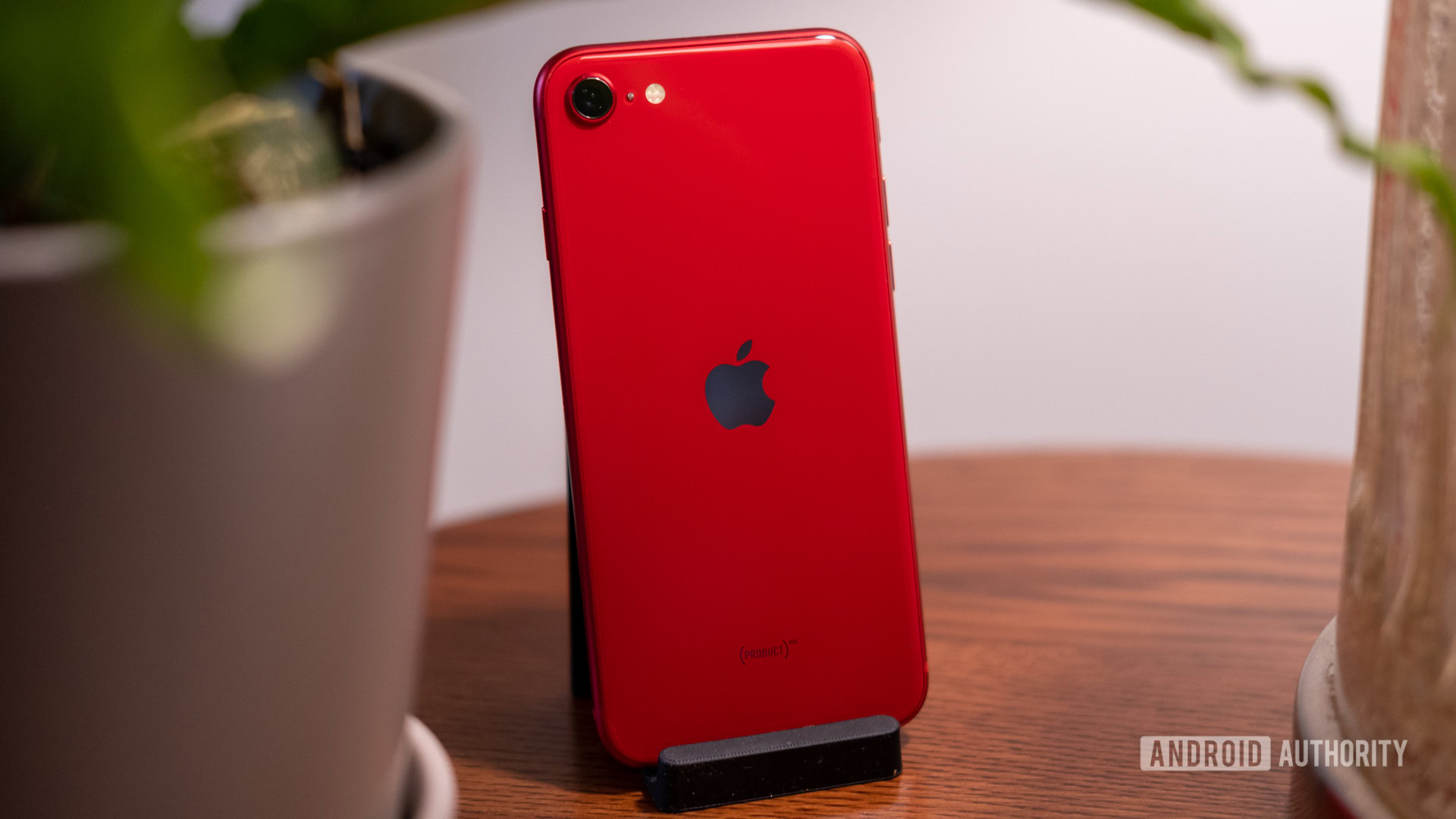
Apple iPhone SE (2022)
MSRP:
What we like
What we don't like
Our scores
Apple iPhone SE (2022)
In 2020, Apple turned something old into something new with the second-generation iPhone SE. The company trotted out a familiar, circa 2017-era design boosted by a new flagship processor under the hood and a few unexpected extras typically reserved for more expensive phones. It worked like a charm, earning our Editor’s Choice badge in the process. Now, the minds in Cupertino are hoping lightning can strike twice, but the budget-to-mid-range phone market isn’t what it was back then — today’s competition is fierce. Does an engine swap add enough of a punch at $429? Find out in our Apple iPhone SE (2022) review.

Update, May 2023: We’ve updated this review to feature newer alternatives to the iPhone SE (2022) and updated software information.
What you need to know about the Apple iPhone SE (2022)
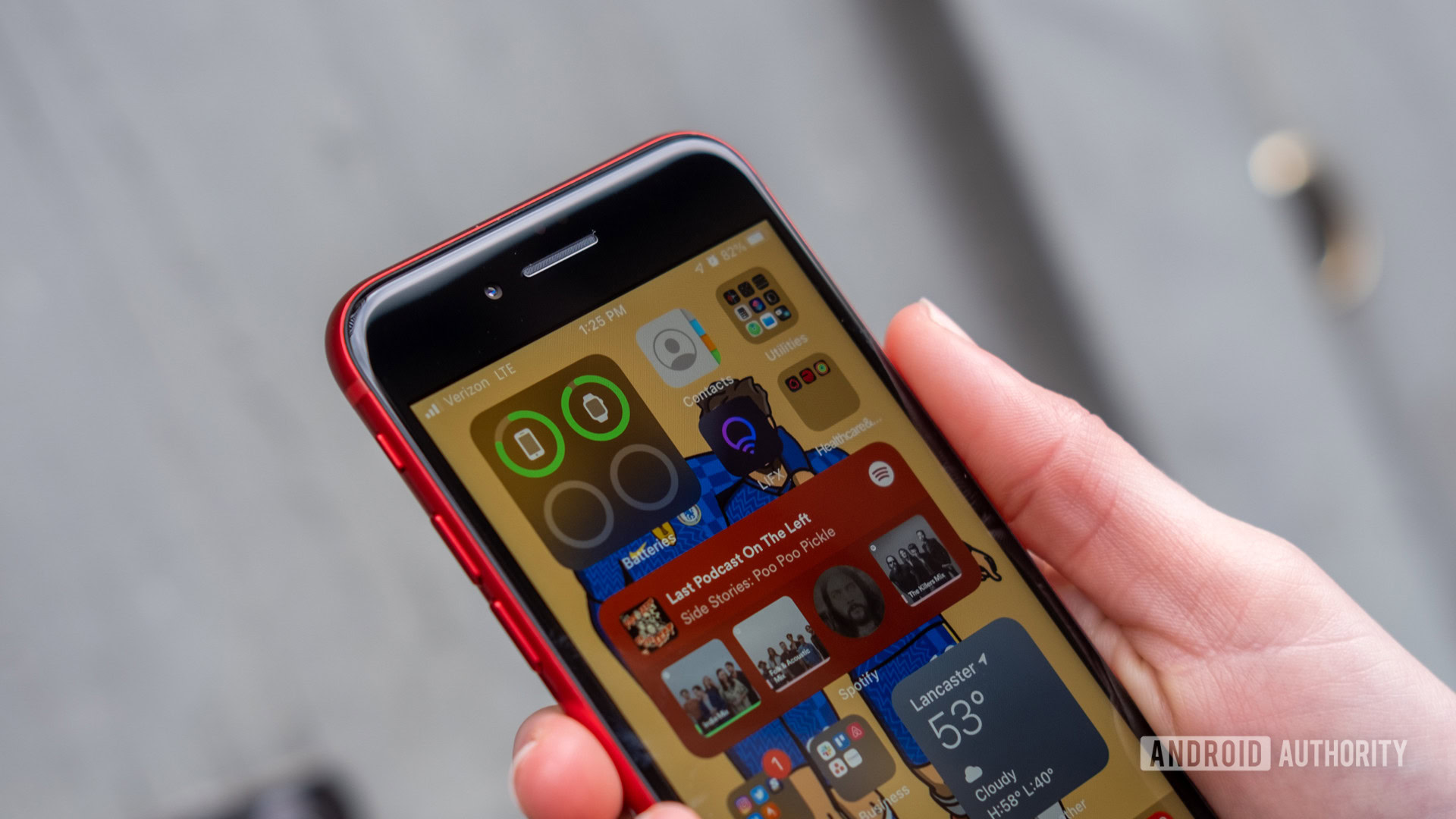
- Apple iPhone SE (64GB): $429 / £419 / €529 / Rs. 43,900
- Apple iPhone SE (128GB): $479 / £469 / €579 / Rs. 48,900
- Apple iPhone SE (256GB): $579 / £569 / €699 / Rs. 58,900
The iPhone SE (2022) is a direct successor to the 2020 model of the same name. It still stands for Special Edition, but comparing the two, you’d be hard-pressed to see what’s so special about the latest model. Apple’s budget device feels like a case of déjà vu, but it’s still the most affordable way to get your hands on the flagship iOS experience. It brings the same body as the iPhone SE (2020) — itself a near carbon copy of the iPhone 8 — yet it’s now infused with an A15 Bionic processor and iOS 15.4 out of the box.
The new iPhone SE shares most of its internal DNA, including the 4GB of RAM, with 2021’s vanilla iPhone 13 and iPhone 13 Mini, but the exterior is much further away from the cutting edge. From the single front and rear cameras to the round home button and chunky bezels, it looks and feels like a phone from a bygone era. It also packs 64GB of base storage — another holdover from previous SE models. If you need more storage, you can opt for either 128 or 256GB, but the boost comes at a price.
It'll take some serious searching to find a smaller phone packing a flagship processor in 2022.
One of the few changes from the 2020 model is the color options, or at least their names. Where the previous version came in black, white, or red, you can now grab your iPhone SE in Starlight, Midnight, or (Product) Red. The color changes aren’t night and day, but the (Product) Red version we tested is a noticeably darker shade than before. You also no longer get a charger in the box, just a USB-C to Lightning cable and some essential paperwork.
The iPhone SE (2022) goes head to head with tougher competition than ever before. It was positioned right around the Google Pixel 6a and Samsung Galaxy A53 5G at launch, but its Android rivals have since received successors. From extra cameras to larger batteries and displays, at least on the surface, it seems far easier to get more bang for your buck if you’re willing to part with iOS. We’ll see if that’s the case in the rest of the review.
Apple’s iPhone SE (2022) is available to buy from just about anywhere, though the base price has climbed a few bucks to $429 compared to its $399 predecessor. It was released on March 18, 2022, and is now available from major retailers like Amazon and Best Buy, or your mobile carrier. You can also grab it straight from Apple, both in the United States and worldwide. Apple has some pretty good trade-in offers at the time of this writing, offering up to $650 off when you hand over an iPhone 8 or later.
iPhone SE (2022) top questions
The iPhone SE (2022) is worth buying if you only want an iPhone and aren’t willing to spend more than $500. For everyone else, there are better Android alternatives that offer more for the same price, or better iPhones that have more features and an updated design. Read the rest of our iPhone SE (2022) review for our detailed thoughts!
The best case for the iPhone SE (2022) will depend on what type of case you want. Check out our guide for buying phone cases for some helpful tips and advice.
Has the design changed at all?
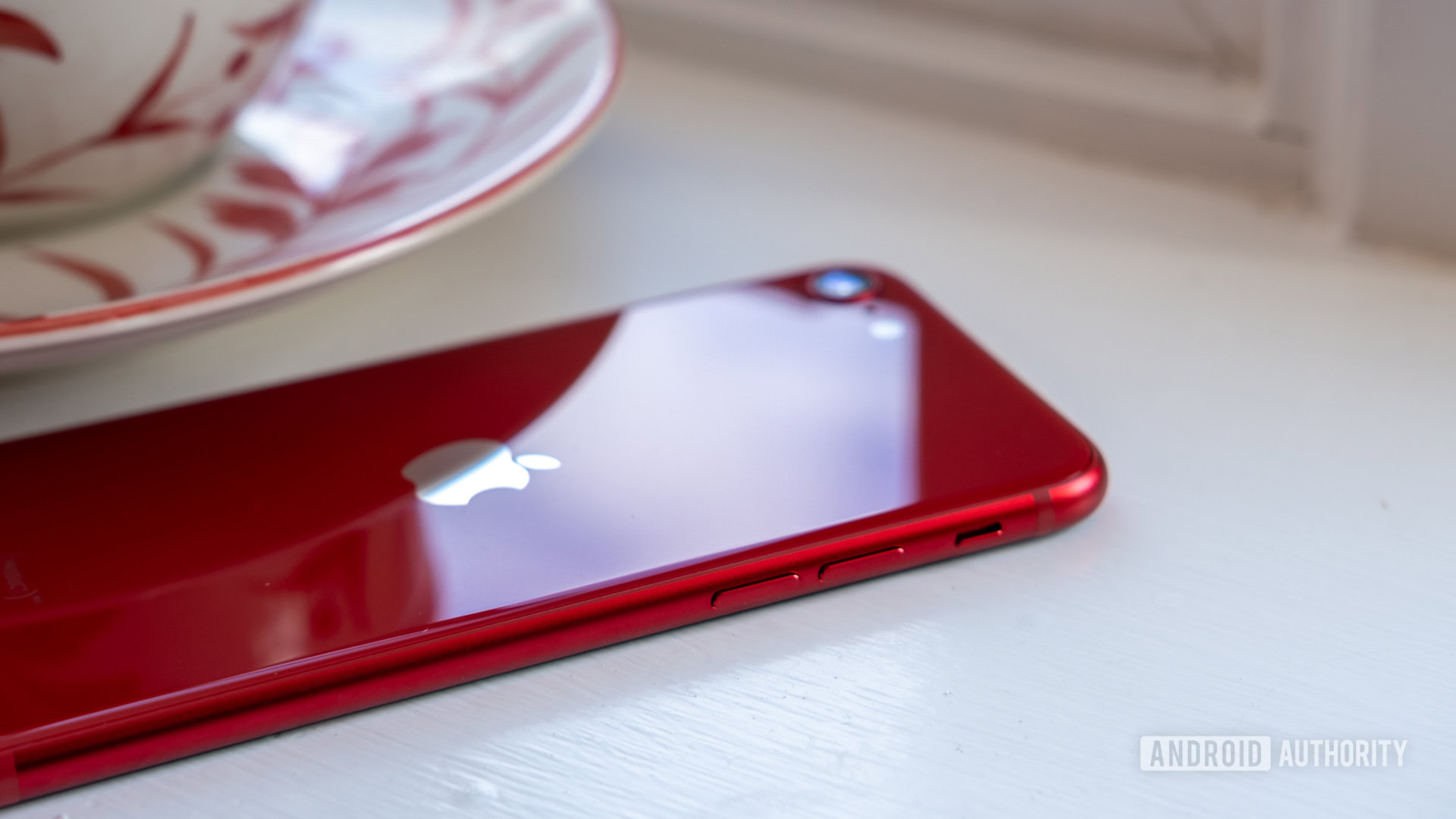
In a word, no. The design of the Apple iPhone SE (2022) is exactly the same as that of the 2020 version, right down to the last millimeter. If you laid them on a table next to each other, you’d only know them apart thanks to slight color differences. Everything is right where it was before — the volume buttons and mute switch are on the left, while the power button occupies the right side. Apple’s Lightning port (something that really needs to go) sits on the bottom edge, right below the home button with a Touch ID sensor. That home button is the same capacitive sensor as before, but Apple has pretty much nailed the vibration to let you know you’ve pressed the button.
Considering the 2020 model was already a rehash of the iPhone 8, it’s no surprise that the design is starting to feel extremely dated. Where the previous model felt like a reasonable remaster of the original iPhone SE with some reliance on old flagship parts, this new version feels like a rerun of a rerun that’s been aired one too many times.
You’ll be hard-pressed to find a smaller or lighter phone on the market these days, though. The iPhone SE (2022) stands just 138.4mm tall and weighs a feather-light 144g. This makes the iPhone SE (2022) one of the last bastions for small phone lovers, but as with so many things about this phone, there are some caveats.
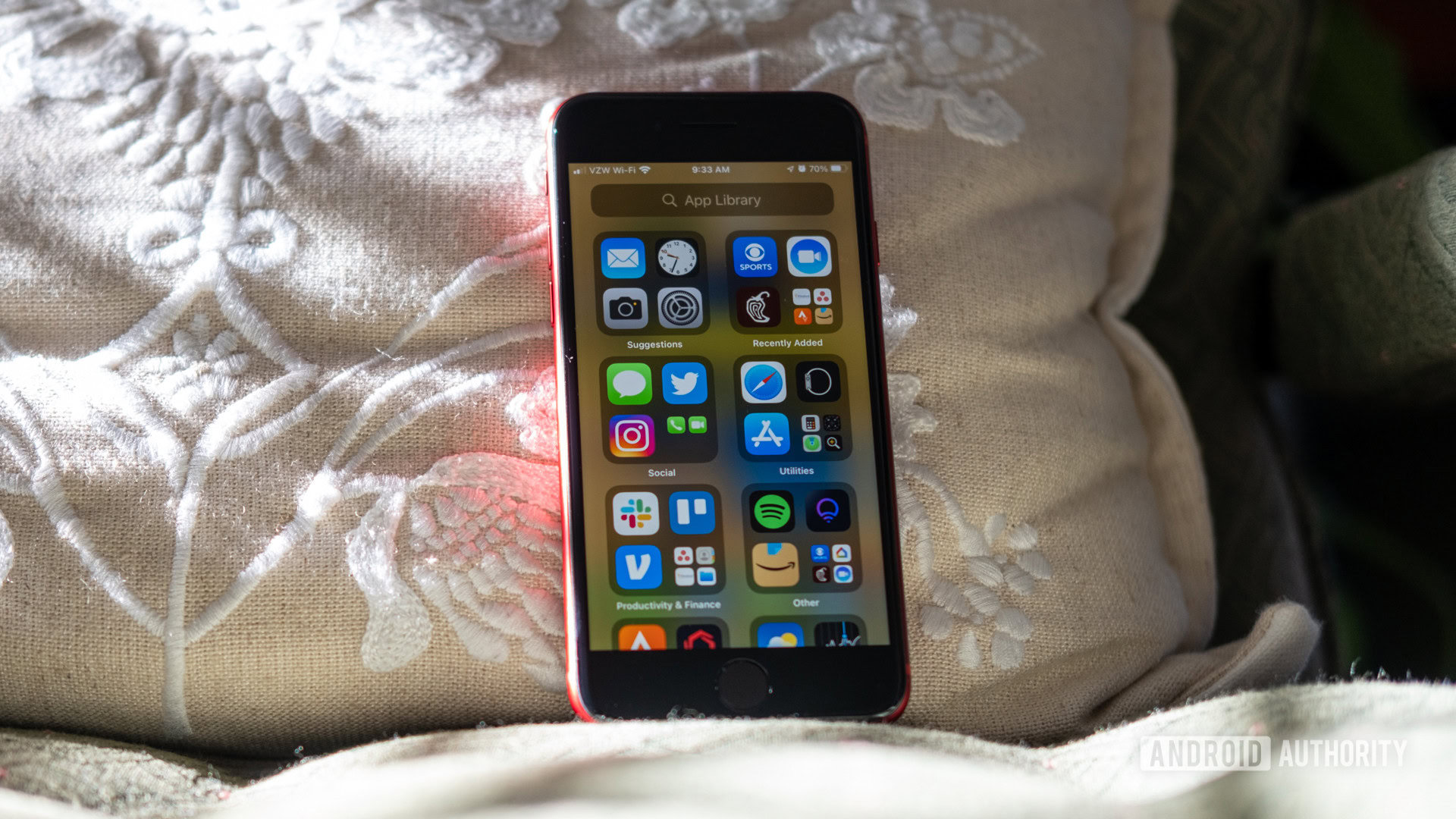
Its 4.7-inch display is a full 0.7-inches smaller than the iPhone 13 Mini. However, the thick forehead and chin leave the iPhone SE standing slightly taller and wider than the iPhone 13 Mini. Notch haters might enjoy the simple, rectangular display, but it’s hard to say that these enormous bezels are any more enjoyable.
The iPhone SE’s limited, sub-Full HD resolution is also noticeably softer when streaming video, and some small text loses its clarity. The color recreation is very good, but I can’t imagine watching a movie on the iPhone SE, especially one shot in widescreen. After you add in the black bars on top and bottom, your picture would be about an inch and a half tall. I loaded up the trailer for Obi-Wan Kenobi, but Ewan McGregor rarely showed up much larger than my fingernail.
The iPhone SE (2022) is identical to the 2020 model before it — and the iPhone 8 — down to the last millimeter.
While the 4.7-inch display might sound nice to some, we live in a world where the average small display is nearly six inches and Full HD resolutions are the standard. By comparison, the iPhone SE (2022) feels almost comical to interact with at times. It’s understandably easy to use with one hand, but the keyboard feels cramped even compared to another (reasonably) small phone like the Samsung Galaxy S23.
It’s also a Retina LCD — that’s right, no Super Retina, no OLED, just a classic 60Hz rectangular panel. The low refresh rate doesn’t feel excessively choppy when scrolling, but we’ve seen most devices at this price point move to more fluid displays.
Despite its small size and replayed design, Apple hasn’t let the iPhone SE (2022) slip from its premium material standards. It sports “ion-strengthened glass” on both the front and back with an aluminum frame to hold it all together. You also get an IP67 rating for both water and dust resistance — a nice feature on the second-generation iPhone SE and still very welcome here, but as it’s more commonplace now, it’s not the killer selling point it once was.
How does the single camera hold up?
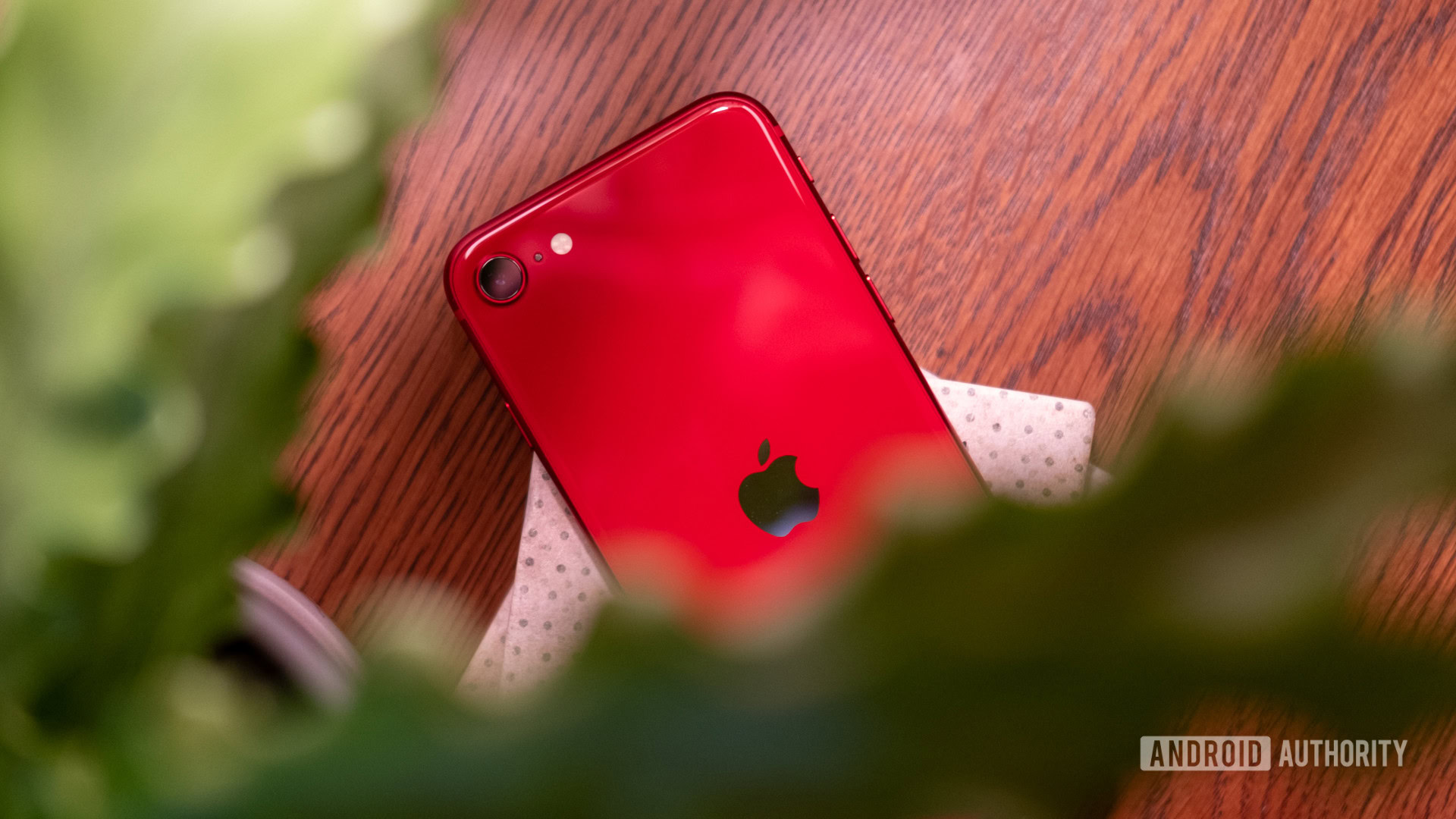
The iPhone SE (2022) carries a single 12MP wide shooter on the back with all the same specs as the last iPhone SE, and it’s just fine for basic images. You can’t expect it to keep pace with the best camera phones, but it can capture plenty of details that don’t fall apart immediately when you crop in — given that you have good lighting. Apple’s color recreation is spot on across the board in my sample images and the single rear camera is capable of some pretty good natural bokeh, as you can see with the various images of flowers below.
The simple setup once again comes down to repurposing the iPhone 8 body, but it’s well behind the competition when it comes to flexibility. Most phones, no matter the price point, now offer ultrawide cameras, and you can usually find a third lens of some kind, too. Whether it’s a dedicated zoom lens, a macro camera, or depth sensor, other OEMs are providing additional shooting options while Apple continues to stick to its guns.
This single-lens, same hardware approach shows its age once you try to get remotely fancy with your photography. For starters, portrait mode is limited to humans only. That means you won’t be able to capture shots of your pets or other objects around the house with Apple’s powerful processing features. The iPhone SE (2020) had this issue, too, but we hoped Apple would fix it this time around.
In general, the lack of any optical zoom makes pictures of animals tougher anyway. You’ll probably scare birds away if you get too close, and the digital zoom is only useful up to a certain point. The iPhone SE doesn’t specify the magnification, but details start to soften about halfway along the zoom slider. Both the standard zoom and half-zoom images of the soccer ball look alright considering this is all digital (with some assistance from Apple’s computational photography). There’s good enough clarity and color, but the full-zoom shot picks up significant grain and a smudging in the details.
There’s also no official night mode of any kind. As such, you have to be very careful to achieve a clear nighttime result. The image processing performs well — shots usually turn out better than they look in the Camera app — but it’s far behind what you can achieve with Apple’s flagships, or even other budget phones with dedicated night modes. My image of a chicken statue, for example, was taken with porch lighting close behind me, while the mural on a building only had a few streetlights to draw from.
The iPhone SE's single camera performs well in good-to-dim lighting, but it's painfully inflexible.
While night shots are a bust, Apple’s Deep Fusion tech helps the iPhone SE make the most out of dim lighting. My picture of an Obi-Wan Kenobi Funko Pop is from a dimly lit room in the middle of the day. It’s not heavily processed, and just about matches what my eye could see.
One of the more interesting camera features is the ability to change between Photographic Styles. These work somewhat like presets in Lightroom, automatically adjusting the tone and warmth you see in your camera. I stuck with the standard profile, but you can also choose Rich Contrast (Tone -50), Vibrant (Tone +50), Warm (Warmth +50), or Cool (Warmth -50).
With a resolution of just 7MP, the selfie camera performs pretty well. It again prefers a lot of light, but I found that it captured good detail and didn’t immediately become muddy if you crop in on an image. Portrait shots are still limited to humans, and the angle isn’t as wide as some that we’ve seen. That said, the edge detection seems to have taken a step forward — only a few of my hairs are out of focus.
Video remains one of Apple’s strengths on the iPhone SE, even with the single-lens setup. It’s capable of 4K recording at up to 60fps or 1080p at 240fps, which matches the iPhone 13’s standard. I had no problems capturing smooth, clear results in my testing. However, it doesn’t offer Cinematic Mode, which means you can’t easily switch your focus between subjects while recording.
How is the battery life?
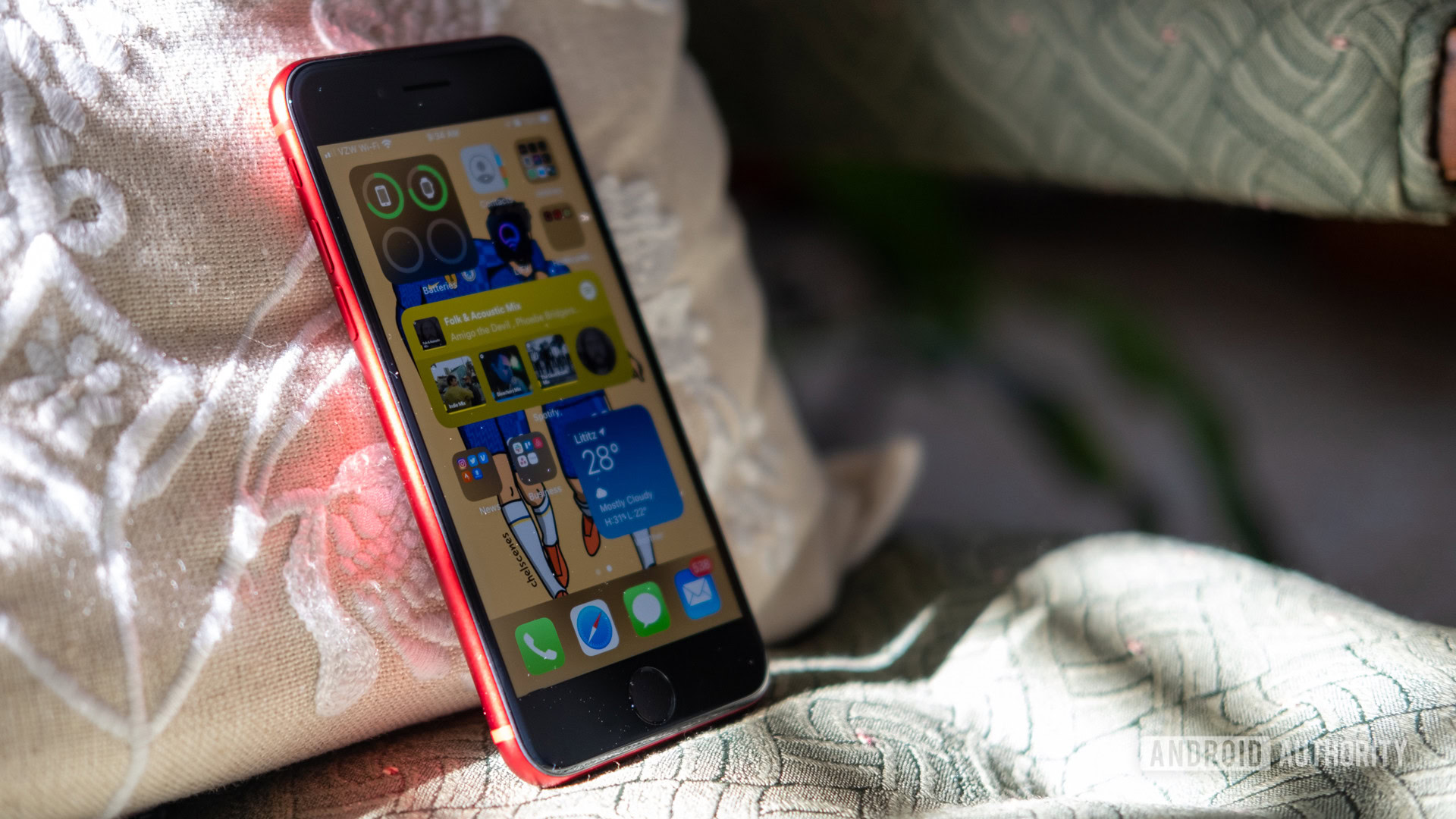
Apple keeps its exact cell sizes close to its chest, but it reportedly sits at around 2,000mAh — downright tiny compared to most Android devices, though slightly larger than the 2020 model.
The iPhone SE stretches that tiny tank to an impressive length. I could usually make it through about a full day on a single charge on lighter days. Apple’s low-resolution, 60Hz display probably works in the iPhone SE’s favor. It also doesn’t sap too much power with basic tasks thanks to Apple’s tightly optimized silicon and software.
Unfortunately, the iPhone SE (2022) does tend to run a little warm under pressure, though a minute or two of inactivity is usually enough to cool it back down. As a result, if you’re particularly active with the camera, navigation, or a lot of gaming, you’re going to be reaching for a charger before you crawl into bed.
You can stretch the small battery surprisingly far if you don't push it, and 18W charging keeps your time spent plugged in to a minimum.
Once you drain the battery, you can get the iPhone SE (2022) back up and running with 18W USB Power Delivery — so make sure to check your charger’s compatibility before you buy. That might seem low, but given the small size of the battery, the results are just fine. I reached a full charge after just under an hour.
There’s no MagSafe on the iPhone SE, so you won’t get close to the 15W wireless speeds of the iPhone 13 series. However, the phone is Qi wireless charging compatible, which is good for about 7.5W speeds. It’s noticeably slower and, in my experience, causes the iPhone SE (2022) to warm up a lot, but you still can’t find many other phones at this price that even support wireless charging, so it’s a nice bonus.
How powerful is the Apple iPhone SE (2022)?
Apple’s flagship A15 Bionic chip — the same processor that powers the iPhone 13 series — gives the iPhone SE (2022) the heart to compete with the big guns. Unsurprisingly for a chip of this caliber, it ran through everything I asked of it without breaking a sweat or slowing down. The battery wasn’t always happy when put under heavy stress, but it continued to power through. I fired up Genshin Impact, and the iPhone SE was happy to oblige. While the download made the phone heat up, the game itself felt smooth and responsive throughout my play. I didn’t notice any dropped frames or lag, no matter how much virtual button-mashing I had to do.
The iPhone SE (2022) performs just as well as its iPhone 13 counterparts in our Geekbench 5 tests, thanks in part to its matching CPU cores. However, it packs four GPU cores compared to the five you’ll get on an iPhone 13 Pro device and comes up slightly lower in 3DMark tests as a result. It scored 8,706, which is lower than the 9,609 we managed with an iPhone 13 Pro Max. It’s lower than the standard iPhone 13, too, which pushed its four-core setup for 9,181.
All of these benchmark scores are remarkable for a $429 device, though. It thoroughly trounces other budget offerings and is a stone’s throw away from the best flagships. While benchmark scores don’t necessarily paint the entire picture, Apple’s latest chipset has no problem putting up gaudy numbers.
The iPhone SE (2022) runs like a Vespa with a V12 engine.
Unfortunately, the iPhone SE only offers 64GB of base storage. You can upgrade to 128GB or 256GB for a cost, but this is the same company that recently dropped 64GB from the iPhone 13 lineup after deciding it wasn’t enough. I won’t linger on this point as I’ve already written about my gripes with such limited storage. Even on a phone that’s this cheap, it’s not acceptable as videos, photos, apps, games, and even basic software updates chew through your storage at such a rate these days. Apple did pack 4GB of RAM into its pocket-friendly device, which matches the iPhone 13 Mini and standard iPhone 13.
The iPhone SE (2022) also follows the iPhone 13 family’s lead in skipping the latest networking options. It still ships with Bluetooth 5.0 and Wi-Fi 6 rather than the Bluetooth 5.2 and Wi-Fi 6E standards, though don’t forget this is a $429 phone, not flagships, so it’s all fair game. The iPhone SE (2022) does, however, offer NFC support so you can make payments with Apple Pay.
With the exception of the stingy base storage, the small phone’s performance far outmatches its physical build. Once you get it going, it runs like a Vespa with a V12 engine.
Anything else?
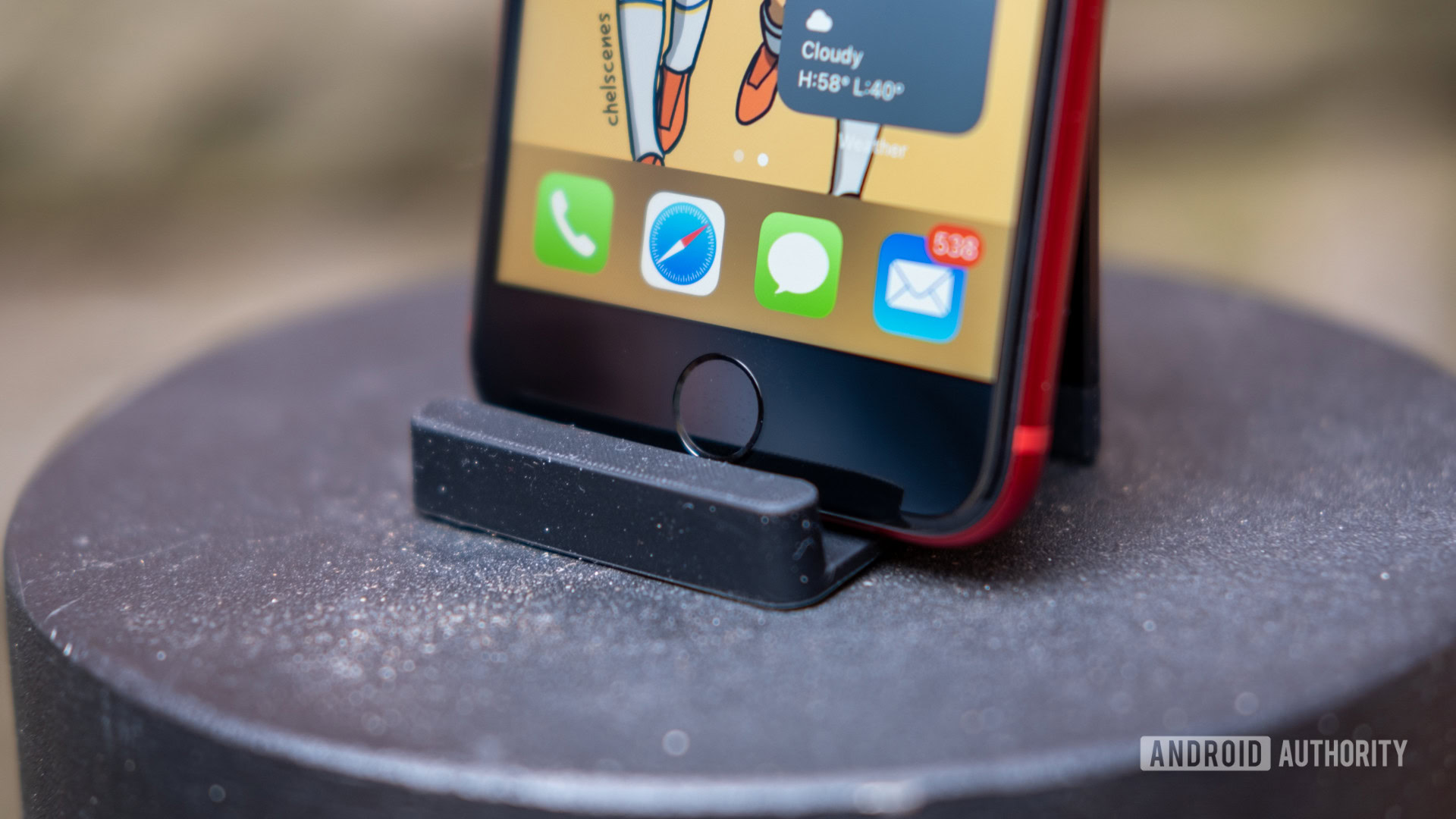
- Audio: The iPhone SE (2022) has stereo speakers, and the results are pretty good. It combines a single down-firing unit with the earpiece, and I didn’t notice any distortion even when I raised the volume. There’s no headphone jack, so you’ll need Lightning headphones (not included) or a trusty pair of Bluetooth ones.
- Biometrics: Touch ID. On an iPhone. In 2022. The iPhone SE carries the classic round home button into a new era, complete with a fingerprint scanner. You won’t get Face ID, despite the massive forehead bezel, but the feature wasn’t present on the previous version or the iPhone 8, either. Honestly, it’s still great to use, but it comes at the cost of a massive bezel.
- SIM support: The iPhone SE (2022) supports dual-SIM in a single nano-SIM tray and optional eSIM download. It seems to prefer eSIM, as I had to visit Verizon for the phone to play nicely with my physical SIM card. If you plan to stick with the iPhone SE (or an iPhone in general) for a long time, you’re probably better off downloading an eSIM.
- 5G: Thanks to its A15 Bionic chipset, the iPhone SE (2022) is ready for fast 5G connectivity. However, it’s only compatible with sub-6GHz networks. There’s no mmWave support to speak of. Of course, this isn’t a surprise for a budget phone, and if you live outside of a major city (or live outside the US), there’s a good chance you don’t have mmWave coverage as it is.
- Updates: Google and Samsung may have improved their update promises in the last few years, but Apple is still the king. The iPhone SE (2022) should see regular iOS updates for a very long time. We tend to see about five to seven years of updates for iPhones, with devices as old as the iPhone 6s series receiving iOS 15. This is where the overkill A15 chip really makes sense, too, as the iPhone SE should still perform well even toward the end of its update lifecycle. Since launch, the iPhone SE (2022) has received its update to iOS 16.
- Software: The iPhone SE (2022) ran on iOS 15.4 for the duration of my testing. It’s nicely refined with widgets and an app library, yet it still feels as familiar as iOS ever has. If you’ve used an iPhone before, you’ll know exactly where everything is (sometimes for better, sometimes for worse). It’s also a breeze to set up a new iPhone from a previous model. I was able to add my Apple Watch and AirPods in a few seconds, and the battery widget keeps me on top of all of them. However, the Control Center doesn’t seem optimized for the older display — the flashlight toggle gets cut off at the bottom and you have to scroll up to access it. As mentioned, the iPhone SE (2022) now has iOS 16 with several updates to the lock screen, security, and Safari browsing capabilities.
Apple iPhone SE (2022) specs
| Apple iPhone SE (2022) | |
|---|---|
Display | 4.7-inch Retina LCD 60Hz refresh rate 1,334 x 750 resolution 16:9 ratio |
Chipset | Apple A15 Bionic |
GPU | 4-core Apple GPU |
RAM | 4GB |
Storage | 64/128/256GB NVMe |
Battery | ~2,018mAh Lightning 18W wired charging Qi wireless charging |
Cameras | Rear: 12MP (f/1.8) Front: 7MP (f/2.2) |
Audio | Stereo speakers |
Video | Rear: 4K at 24/25/30/60 fps 1080p at 25/30/60 fps Front: 1080p at 25/30 fps |
SIM support | Dual SIM (nano-SIM and eSIM) |
Connectivity | 5G (sub-6) Wi-Fi 6 Bluetooth 5.0 NFC |
Software | iOS 15.4 |
Durability | IP67 |
Colors | Starlight Midnight Product Red |
Dimensions and weight | 138.4 x 67.3 x 7.3mm 144g |
Value and competition

Starting at $429 in the US, the Apple iPhone SE (2022) is positioned against some of the best budget phones we’ve ever seen. It’s only marginally cheaper than some of the best affordable Android phones, but it lacks plenty of the features that have become standard. With a small, low-res screen, a single rear camera, and a dated overall design, it’s not hard to see the iPhone SE (2022) falling behind some of its closest rivals. It’s only fallen further behind now that Samsung and Google have released their next generation of midrange devices.
For example, Google’s Pixel 7a ($477 at Amazon) now sits closer to the company’s flagships both in terms of design and power — and price. It has an aluminum-shielded camera bar with a pair of lenses — 64MP and 13MP — with the powerful Tensor G2 chip under the hood. Google’s 18W wired charging is a wash, but the Pixel 7a finally offers wireless charging at a modest 7.5W. The Pixel 7a’s distribution continues to grow, too, as it’s now available in more than a dozen countries.
If we turn to Samsung, the Galaxy A54 5G ($379.5 at Amazon) tells a similar tale. It stars a 6.4-inch Gorill Glass 5 Super AMOLED panel with a 120Hz refresh rate. Samsung kept its mid-range device in-house with the Exynos 1380 processor, and you can pair it with up to 8GB of RAM and up to 256GB of storage. The A54 5G dropped to three rear cameras, most notably a 50MP wide lens and a 32MP selfie shooter on the front. Its 5,000mAh battery is the biggest of the bunch, and the 25W wired charging is faster, too.
Even Motorola offers a selection of mid-range devices, such as the Moto G Power 5G ($249 at Amazon). Moto keeps finding ways to trim its asking price, and it offers plenty of real estate for the price. The Moto G Power 5G kicks things off at 6.5 inches, adding 5G speeds and 6GB of RAM for the first time. You’ll also find a 50MP wide sensor leading the way on the back, but it’s flanked by underpowered macro and depth sensors. Motorola is still dedicated to its massive battery — and slow charging — so while you’ll get 5,000mAh to work with, it will only charge at about 15W. The Moto G Power 5G might also be the last of the company’s budget devices to come bundled with a charger.
Inside Apple’s ecosystem, you have a few more options to consider, too. The iPhone 13 Mini ($599.99 at Amazon) offers the closest form factor, though it swaps the hefty bezels for a notched front panel. You also get two rear cameras to work with, but you’ll have to spend a few hundred extra dollars. Most people will probably want to opt for the iPhone 14 ($604 at Amazon), though, with its better cameras, larger display, and bigger battery.
Apple iPhone SE (2022) review: The verdict

The Apple iPhone SE (2022) remains the most affordable way to get iOS in your pocket. However, it suffers from a severe lack of innovation. Its iPhone 8-copy design was beginning to feel dated with the iPhone SE (2020), and two extra years have not been kind to the thick bezels or the single camera. The blazing-fast A15 Bionic chip gives this small iPhone the engine to run with the best devices on the market, but the cramped, low-resolution display and meager base storage holds it back like a pair of training wheels.
The iPhone SE is gifted with an impressive engine, but the overall design holds it back like a super-charged motorbike strapped to a pair of training wheels.
If you desperately want an iPhone that won’t hurt your wallet too much, the iPhone SE (2022) is for you. It will receive software updates for a long time, and 5G support gives it a degree of futureproofing. Touch ID is still nice, too, though it’s perhaps not enough of a reason to put this one in your pocket. Apple’s lone rear camera offers good results as usual, but it comes stripped of now-common features.
The budget phone market was different when the last iPhone SE dropped in 2020. Now, Google and Samsung have raised their game to an entirely new level, and aside from raw power, Apple isn’t keeping up. You’re bound to find better value down several other avenues, but it will mean parting ways with the comfort of iOS.